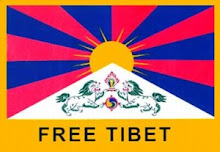 I’m glad to see that Sandy Denny still has got so many fans. For me, she’s the best female singer of the british folk scene. Her voice isn’t simply beautiful: it’s also powerful and poignant, passionate and vibrant. And she can be tender and sweet too, or hopelessly melancholic, as in the memorable Fotheringay. But I find impossible for words to evoke all of her immense qualities as an artist. Songs like the one quoted before, or her wonderful rendition of Matty Groves or many more traditional tunes still make me feel shivers down my spine at every new listen. So, I’m very happy to post here one of her first albums, that she recorded as a member of the Strawbs. Sandy Denny and the Strawbs, originally recorded in Denmark in 1967 (as All Our Own Work), saw the light for the first time only six years later, to be reprinted in 1985 and then again in 1991 by Joe Boyd’s Hannibal.
I’m glad to see that Sandy Denny still has got so many fans. For me, she’s the best female singer of the british folk scene. Her voice isn’t simply beautiful: it’s also powerful and poignant, passionate and vibrant. And she can be tender and sweet too, or hopelessly melancholic, as in the memorable Fotheringay. But I find impossible for words to evoke all of her immense qualities as an artist. Songs like the one quoted before, or her wonderful rendition of Matty Groves or many more traditional tunes still make me feel shivers down my spine at every new listen. So, I’m very happy to post here one of her first albums, that she recorded as a member of the Strawbs. Sandy Denny and the Strawbs, originally recorded in Denmark in 1967 (as All Our Own Work), saw the light for the first time only six years later, to be reprinted in 1985 and then again in 1991 by Joe Boyd’s Hannibal. «Sandy Denny was only with the Strawbs for a short period of time, but she was around long enough to make some very memorable contributions to the band. […] Denny is clearly the main attraction on this CD. In contrast to the progressive-rock and art-rock elements the band would later embrace, these sides are acoustic-oriented and unmistakably British-sounding folk-pop. Gems like Tell Me What You See In Me, Nothing Else Will Do and Who Knows Where the Time Goes [her first – stunning – recorded composition] not only illustrate how superb and moving a singer Denny was, they also demonstrate how prolific a composer Dave Cousins was. One can only speculate as to what direction the Strawbs would have taken had Denny stayed, but what we know with certainty is that her short-lived association with Cousins was lucrative and valuable.» (AMG)
«The Troubadour in Earls Court was the “in” place to be in the late sixties. […] I dropped in at the singers’ night one Tuesday and suddenly, thee was the best voice I’d ever heard. She was sitting on a stool playing an old Gibson guitar, about eighteen, wearing a white dress, a white straw hat, with long blond hair and singing like an angel. I don’t know what came over me but I went up to her immediately afterwards, introduced myself and invited her to join The Strawbs. Much to my astonishment she said yes. […] We rehearsed round at Sandy’s flat and literally sang all night. The songs, the arrangements, happened as though by magic. We recorded some demos and a friend took them to Denmark to play to the boss of a record company he knew. Karl Knudsen phoned up offering us a contract and there we were on the ferry to Denmark, rehearsing in the bar, to make the album. It was as easy as that. […] Sandy Denny to me was the finest woman singer we ever had in this country and she was a dear and close friend who I miss a lot. I hope you enjoy the record. It meant a lot to Tony, Ron and me and I can tell you that it meant a lot to Sandy as well.» (Dave Cousins, from the liner notes to the 1991 reprint).
So long, Sandy. And thanx.
Link in comments




























































